Gwanghwamun Gate (광화문)
0m 154063 2022-12-14
161, Sajik-ro, Jongno-gu, Seoul
+82-2-3700-3900
Built in 1395 under the reign of King Taejo, the first king of the Joseon dynasty, Gwanghwamun Gate is the southern gate of Gyeongbokgung Palace. It is also the main gate of the palace, therefore larger and fancier in comparison to the other gates. Gwanghwamun Gate consists of three arched gates; the center gate was used by the king, while the other two were used by the crown prince and royal officials. The tall granite walls of the gate serve as a platform for the wooden gate tower that watches over the city. The gate has a sign with its name written at the top center of the gate tower.
Gwanghwamun Gate went through several damages and restorations over the course of history. It was first severely damaged during the Imjin War (1592-1598) and was not restored until the reconstruction of Gyeongbokgung Palace in 1864. Under the Japanese administration, the gate was demolished and relocated to the north of the palace's eastern gate, followed by series of damages during the Korean War (1950-1953). In 1968, Gwanghwamun Gate was relocated back to the south of the palace and was rebuilt using concrete; however, the gate’s position was shifted a few meters away from its original location. In 2006, a major reconstruction project took place to restore Gwanghwamun Gate to its original state and location, disassembling the structure completely and replacing concrete with granite and wood. After three years and eight months of construction, Gwanghwamun Gate was fully restored to its original form and was open to the public on August 15, 2010.
National Palace Museum of Korea (국립고궁박물관)
181.6913306317921m 82108 2023-03-24
12, Hyoja-ro, Jongno-gu, Seoul
+82-2-3701-7500
The National Palace Museum of Korea displays over 40,000 relics from the Joseon dynasty. With various treasures on exhibit, the museum continues to provide information on the dignity of royal culture and the creativity of royal cultural assets.
Gogung Tteurak (고궁뜨락)
181.6913306317921m 16108 2020-04-17
12, Hyoja-ro, Jongno-gu, Seoul
+82-2-720-0486
Located on the first floor of the National Palace Museum of Korea, Gogung Tteurak consists of a museum shop and a café. It is open from 09:00 to 18:00 during the weekdays and up to 21:00 on Wednesdays and Saturdays. It operates without closing days as of January 1, 2017.
HANILKWAN - Gwanghwamun Branch (한일관 광화문)
245.0754770938569m 80 2024-03-18
50, Jong-ro 1-gil, Jongno-gu, Seoul
+82-2-722-7557
It is a store that has been operating with a long tradition since 1939. This Korean dishes restaurant is located in Jongno-gu, Seoul. The most famous menu is bulgogi.
National Museum of Korean Contemporary History (대한민국역사박물관)
255.1179039576813m 34575 2022-12-27
198, Sejong-daero, Jongno-gu, Seoul
+82-2-3703-9200
The National Museum of Korean Contemporary History opened on December 26, 2012, and showcases Korea's modern history, from the opening of Incheon Port to current times. The museum provides an in-depth look at the changes in the nation through exhibitions and educational programs, as well as researching, developing, and collecting materials. The museum is comprised of four exhibition halls; Prelude to the Republic of Korea, Foundation of the Republic of Korea, Development of the Republic of Korea, and Modernization of South Korea, toward the World. In addition, the Korean History Dream Village features a hands-on program hall for children to learn modern and contemporary history. In addition to special exhibitions, the museum also offers educational and cultural programs for children.
Lee Seo-yun Hanbok (이서윤한복)
259.07982716915916m 15915 2020-04-11
7, Hyoja-ro, Jongno-gu, Seoul
+82-2-735-4250
Lee Seo-yun Hanbok seeks hanbok that blends both traditional Korean and western designs. It not only weaves fabrics for its own hanbok, but dyes them as well. The main items cover party dresses, wedding dresses, ornaments, cushions, and sitting cushions. Lee Seo-yun, the owner of the store, was responsible for clothing and ornaments shown in the Korean soap opera, Iljimae and his works have appeared in many soap operas, traditional Korean dance performances and fashion shows as well.
Sejong-ro Park (세종로공원)
294.63500595633366m 23878 2022-08-31
jiha 189, Sejong-daero, Jongno-gu, Seoul
+82-2-722-9598
Sejong-ro Park is located next to Sejong Center for the Performing Arts in central Seoul. Inside the park, there are wooden benches and shaded areas where people can sit and relax. Also available are water fountains, a round outdoor stage, and various sculptures. The lunch crowd from the nearby office buildings often come to the park during weekdays. On the weekends, the park is also used as a venue for outdoor weddings.
Seoul's anthem and the poem "Bulnori" by Ju Yo-han are written on a memorial stone that can be found inside the park.
Gallery Hyundai (갤러리 현대)
299.4740801904703m 20136 2021-03-18
14, Samcheong-ro, Jongno-gu, Seoul
+82-2-2287-3500
Gallery Hyundai has been improving daily for over 40 years since April 1970, working closely with various Korean artists in modern art. Gallery Hyundai introduces varied artists including prominent artists, as well as up-and-coming artists, regardless of genre through sophisticated exhibitions, showing domestic and overseas art all in one place.
Dugahun (두가헌)
299.4740801904703m 11197 2024-03-20
23 Yulgok-ro 1-gil, Jongno-gu, Seoul
+82-2-3210-2100
Dugahun is a wine restaurant near Gyeongbokgung Palace, meaning "a very beautiful house." Located in a traditional hanok from the 1910s, it offers a taste of Western culture with wine. Only lunch and dinner courses are available, and customers can select wines from the underground wine cellar or bring their own. Across the street, Gallery Dugahun, housed in a historic Russian-style brick building built in the late period of Joseon, showcases high-quality art pieces.
Gyeongbokgung Palace (경복궁)
305.6760015499504m 1752365 2024-01-18
161, Sajik-ro, Jongno-gu, Seoul
+82-2-3700-3900
Gyeongbokgung Palace was built as the official palace of the Joseon dynasty by Yi Seong-gye, who becomes King Taejo and the founder of the new regime. Gyeongbokgung Palace is commonly referred to as the Northern Palace because its location in the north of Changdeokgung Palace in the east and Gyeonghuigung Palace in the west. Gyeongbokgung Palace is arguably the most beautiful and is the largest of all five palaces. Many Joseon kings were crowned here, including the 2nd King Jeongjong, 4th King Sejong, 6th King Danjong, 7th King Sejo, 9th King Seongjong, 11th King Jungjong, and the 13th King Myeongjong. The premises were once destroyed by fire during the Imjin War (1592-1598). However, all of the palace buildings were later restored under the leadership of Heungseondaewongun during the reign of King Gojong. The assassination of Empress Myeongseong, however, resulted in Gyeongbokgung Palace losing its function as a royal palace, eventually witnessing the downfall of the Joseon dynasty. Gyeongbokgung Palace retains the original Gyeonghoeru Pavilion, a prime example of Joseon architecture, and the Hyangwonjeong Pavilion and pond. The sculptures in the Geunjeongjeon Hall exemplify Joseon-era sculpture techniques. The west side of the area outside Heungnyemun Gate is occupied by the National Palace Museum of Korea, while the eastern side of Hyangwonjeong Pavilion within the Gyeongbokgung Palace is occupied by the National Folk Museum of Korea.
* Major cultural heritages
1) [Historic Site] Gyeongbokgung Palace
2) [National Treasure] Geunjeongjeon Hall of Gyeongbokgung Palace
3) [National Treasure] Gyeonghoeru Pavilion of Gyeongbokgung Palace
4) [Treasure] Jagyeongjeon Hall of Gyeongbokgung Palace
5) [Treasure] Chimney with Ten Symbols of Longevity in Relief at Jagyeongjeon Hall of Gyeongbokgung Palace
6) [Treasure] Chimneys in Amisan Garden of Gyeongbokgung Palace
7) [Treasure] Geunjeongmun Gate and Corridor of Gyeongbokgung Palace
8) [Treasure] Wind Streamer Pedestal of Gyeongbokgung Palace

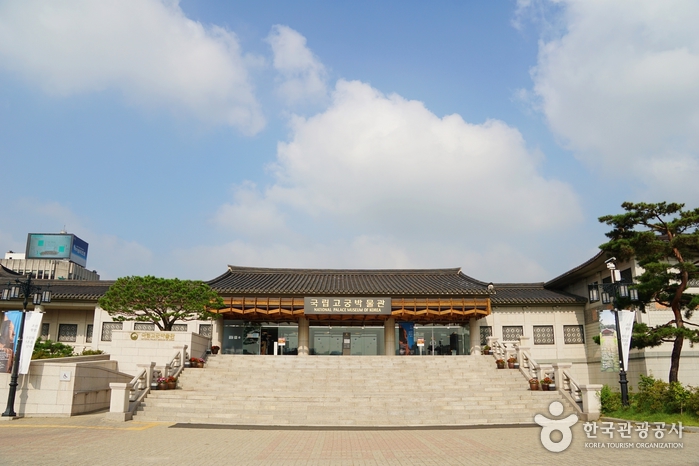
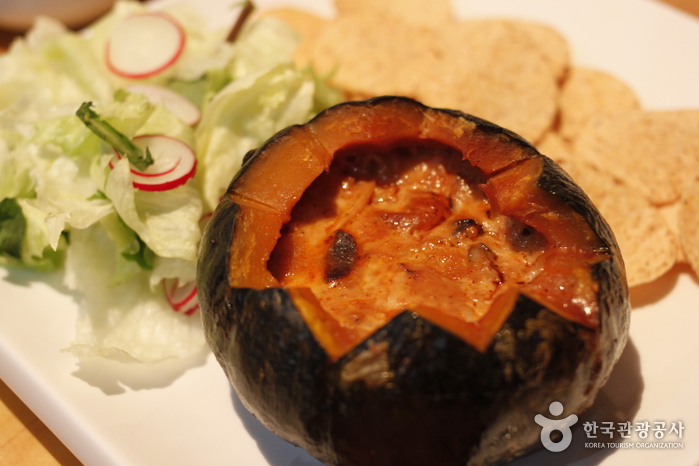
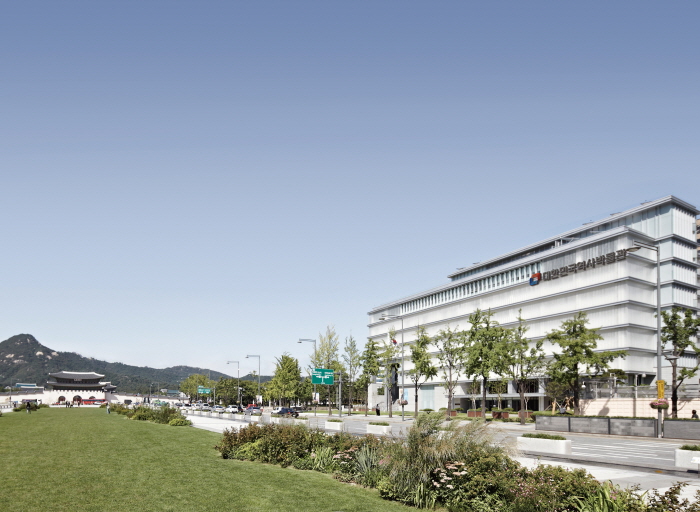
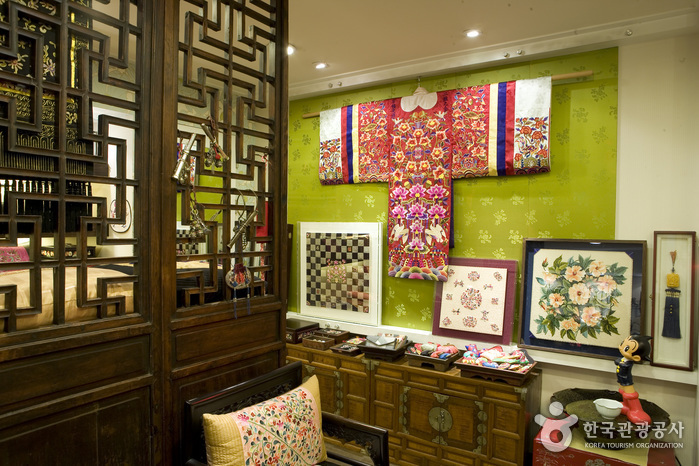
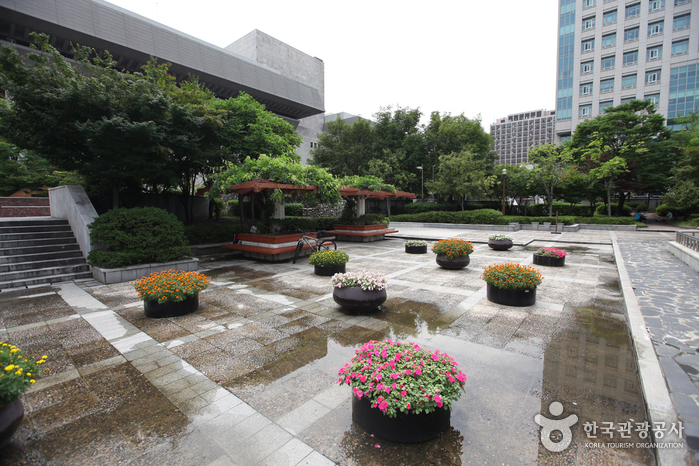
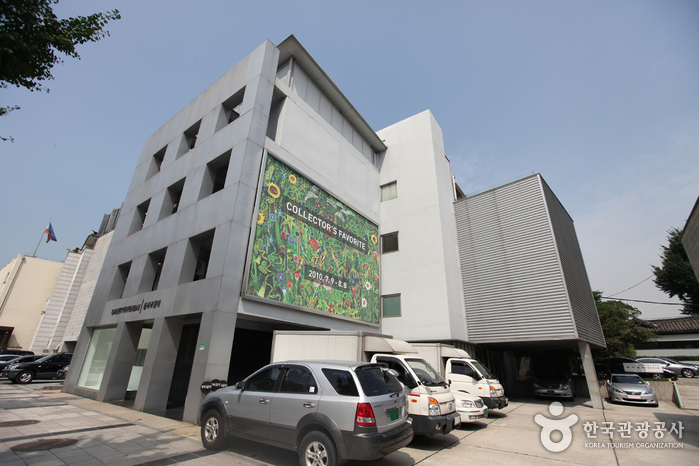
 English
English
 한국어
한국어 日本語
日本語 中文(简体)
中文(简体) Deutsch
Deutsch Français
Français Español
Español Русский
Русский